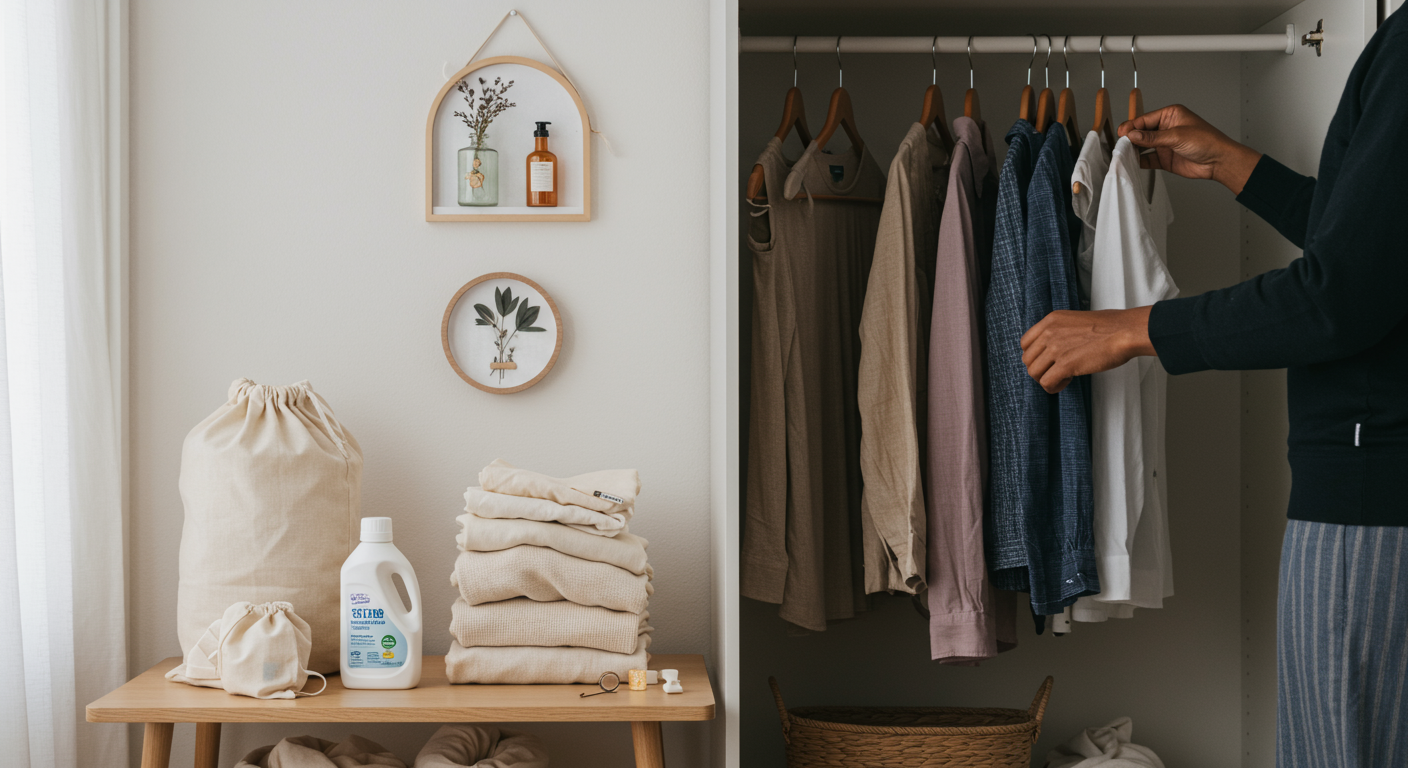As an eco-conscious consumer, you're already aware of the impact our fashion choices have on the planet. This guide dives deep into sustainable fashion, providing you with the knowledge and strategies to create a capsule wardrobe that's both stylish and kind to the environment. We'll explore ethical sourcing, sustainable fabrics, and how to make informed choices that align with your values.

Deep Dive into Sustainable Fashion for Eco-Conscious Living
Sustainable fashion goes beyond simply choosing a 'green' label. It's about considering the entire lifecycle of your clothes, from production to disposal. This includes:
- Ethical Sourcing: Ensuring fair labor practices and safe working conditions.
- Sustainable Materials: Opting for eco-friendly fabrics like organic cotton, linen, hemp, recycled materials, and innovative textiles.
- Reduced Environmental Impact: Minimizing water usage, chemical inputs, and carbon emissions during manufacturing.
- Durability and Longevity: Choosing high-quality items that last, reducing the need for frequent replacements.
Advanced Strategies and Insights
- Fabric Focus: Explore the best sustainable fabrics, their benefits, and their impact. For example, organic cotton uses less water and fewer pesticides than conventional cotton. Recycled materials reduce waste and energy consumption. Innovative fabrics like Tencel (made from sustainably sourced wood pulp) and Piñatex (made from pineapple leaf fibers) are emerging alternatives.
- Brand Research: Go beyond surface-level claims. Research brand transparency, certifications (GOTS, Fair Trade), and supply chain practices. Websites and apps can help you vet brands.
- The Power of Repair: Learning basic sewing skills or finding local tailors to mend and repair your clothes can significantly extend their lifespan.
- Clothing Swaps and Resale: Organize clothing swaps with friends or explore resale platforms. This keeps clothes in circulation and reduces demand for new items.
Optimizing Your Sustainable Wardrobe
- Capsule Wardrobe Creation: Build a capsule wardrobe by selecting versatile, high-quality pieces that can be mixed and matched. Focus on timeless styles and neutral colors that transcend seasonal trends.
- Care for Your Clothes: Proper care extends the life of your clothing. Wash clothes less frequently, use eco-friendly detergents, and air-dry whenever possible.
- Mindful Consumption: Before buying, ask yourself if you truly need the item. Consider the cost per wear and how it fits into your existing wardrobe. Support brands that prioritize ethical practices and sustainable materials.
- Upcycling and DIY: Get creative with upcycling old clothes into new items.
Case Study: Thriving on an Advanced Sustainable Path
Imagine Sarah, a fashion-forward professional. She meticulously researches brands, focusing on transparency and ethical certifications. She favors durable, classic pieces and invests in repair services when needed. Sarah regularly participates in clothing swaps and uses resale platforms to give her clothes a second life. Her wardrobe is a testament to her values and shows that sustainable fashion is about long-term thinking.
Navigating Complex environmental Challenges
- Microfiber Pollution: Synthetic fabrics shed microfibers when washed, polluting waterways. Consider using a Guppyfriend Washing Bag to capture these fibers.
- Water Usage: The fashion industry is a major water consumer. Choose fabrics and brands that prioritize water conservation.
- Waste Disposal: Textile waste is a huge problem. Donate, recycle, or upcycle your clothes to keep them out of landfills.
- Greenwashing: Be aware of brands making misleading environmental claims. Look for certifications and independent verification.
Integrating Advanced Sustainable Practices
- Carbon Offsetting: Some brands offer carbon offsetting programs. You can also calculate your fashion footprint and offset your emissions.
- Supporting Circular Economy: Embrace practices that support a circular economy, where materials are reused and repurposed, minimizing waste.
- Educating Others: Share your knowledge and inspire others to make more sustainable fashion choices.
- Embrace Minimalism: Adopt a minimalist approach to clothing. Prioritize quality over quantity and reduce impulsive purchases.
Scaling Your Impact: Beyond Personal Choices
- Advocacy: Support organizations working to improve the sustainability of the fashion industry.
- Conscious Investment: Consider investing in companies committed to sustainable practices.
- Demand Transparency: Encourage brands to be more transparent about their supply chains and environmental impact.
- Promote Circularity: Push for policies that support the circular economy, such as extended producer responsibility.
Expert-Level Green Living Insights
- Material Innovations: Stay updated on the latest sustainable fabric innovations, such as lab-grown materials and bio-based textiles.
- Supply Chain Challenges: Understand the complexities of fashion supply chains and the role of technology in improving transparency.
- The Future of Fashion: Explore emerging trends in sustainable fashion, such as digital fashion and on-demand manufacturing.